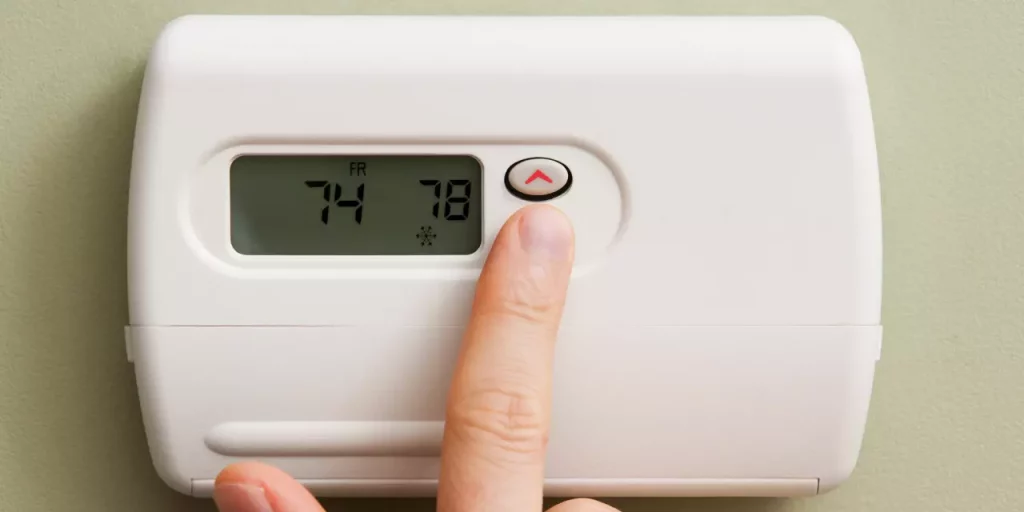Helpful Environmentally Friendly Tips for Saving on Heating Costs

Helpful Environmentally Friendly Tips for Saving on Heating Costs
As the outside temperature falls, we raise the temperature inside, and with it, heating costs go up, too. While peaceful white snowfall may be picturesque, the winter utility bills are not quite as pretty.
If you’ve been to a gas station or store recently, you’ve seen first-hand how the 6.8% inflation rate is affecting prices on just about everything nowadays. The smaller supply along with increased demand for fuel will really hit home as a result.
Almost half of U.S. households use natural gas heat as their primary fuel source, which costs over 25% more than last year, and consumers are projected to spend 30% more than last winter, on average.
The 41% of U.S. households that heat with electricity, which is up 6.5%, are slated to spend 6% more, according to the Winter Fuels Outlook 2021 report from the U.S. Energy Information Administration.
The 4% of households that heat mostly with heating oil, or the 5% who use propane, could see even bigger cost hikes, between 43-54%.
While we can’t change the weather or the economy, we can change our habits to be smarter for our budget and more environmentally friendly.
Here are some practical ways to keep more heat inside your home and more money inside your wallet.
- Add rugs to your floors, such as in the bathroom, to help keep rooms insulated. Dress in layers, warm sweaters and socks. Use flannel sheets and more blankets at night to keep your body heat inside.
- Clean or change air filters for heating devices. Debris is unclean for breathing and will keep the warm air from circulating. Move furniture and curtains away from heaters to enable air flow and prevent fire hazards.
- Lower the thermostat by 7-10 degrees when everyone is out for the day. An electronic thermostat usually allows you to set the temperature to automatically increase or decrease as your schedule changes each day. If going away for a few days, do not reduce temps to less than 55 degrees to prevent pipes from freezing.
- Call a professional to inspect your furnace and either clean it or upgrade it. The cost can be well worth the savings in heating. An old and dirty furnace system can work at 60 to 70% efficiency; switching to a newer, high-efficiency system can work at 90 to 98%.
- Contact your utility company for a free home check-up. Costs for service or upgrades can be offset by federal tax credits, and utility rebates are available for many energy-efficient upgrades.
- Check windows for leaks. Detect air leaks by lighting a candle and watching if it blows in a certain direction. Seal windows with caulking or spray-foam insulation, or cover with plastic insulation sheets. Put draft stoppers under doorways.
- Open the shades during sunlight hours to let the sun naturally heat up your space. Close curtains at night to retain your heat and prevent cold night air from entering. Insulated curtains can help to better trap the heat than basic curtains would.
- Use plug-in space heaters to warm up isolated areas instead of turning on entire heating zones if all the space is not in use. Place them in open areas, away from flammable items and children or pets. Close vents in rooms that are not being used to avoid unnecessary output.
- Switch to LED light bulbs. They use about 75 percent less energy and last about 25 times longer than incandescent bulbs. Though their initial cost is higher, it pays off in the form of reduced electric bills over time. Unplug devices that are not in use.
- Reduce your water heater temperature to 120 degrees. Many houses or buildings have water heaters set to a burning temperature of 140 degrees. Reducing it to a comfortable 120 degrees is safer for skin and easier on heating costs.
Following a few of these easy-to-implement tips and hacks for saving on heat costs can make a big difference. Put them to good use so you can sit back and enjoy a cup of hot cocoa during this cold winter, content that you are staying warm and also saving money.
Content Source: CUContent






